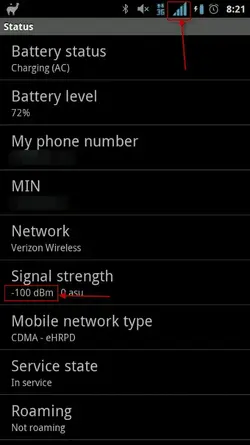KayIslandDrunk
Member
Does anyone else notice that the RAZR sometimes shows 5/5 bars when the actual signal is much lower? As you can see from my screenshot I don't have a great signal but it shows I do. This is very frustrating as I often time out when surfing the web or hit lots of buffers when streaming music and I have no quick indication as to why.

